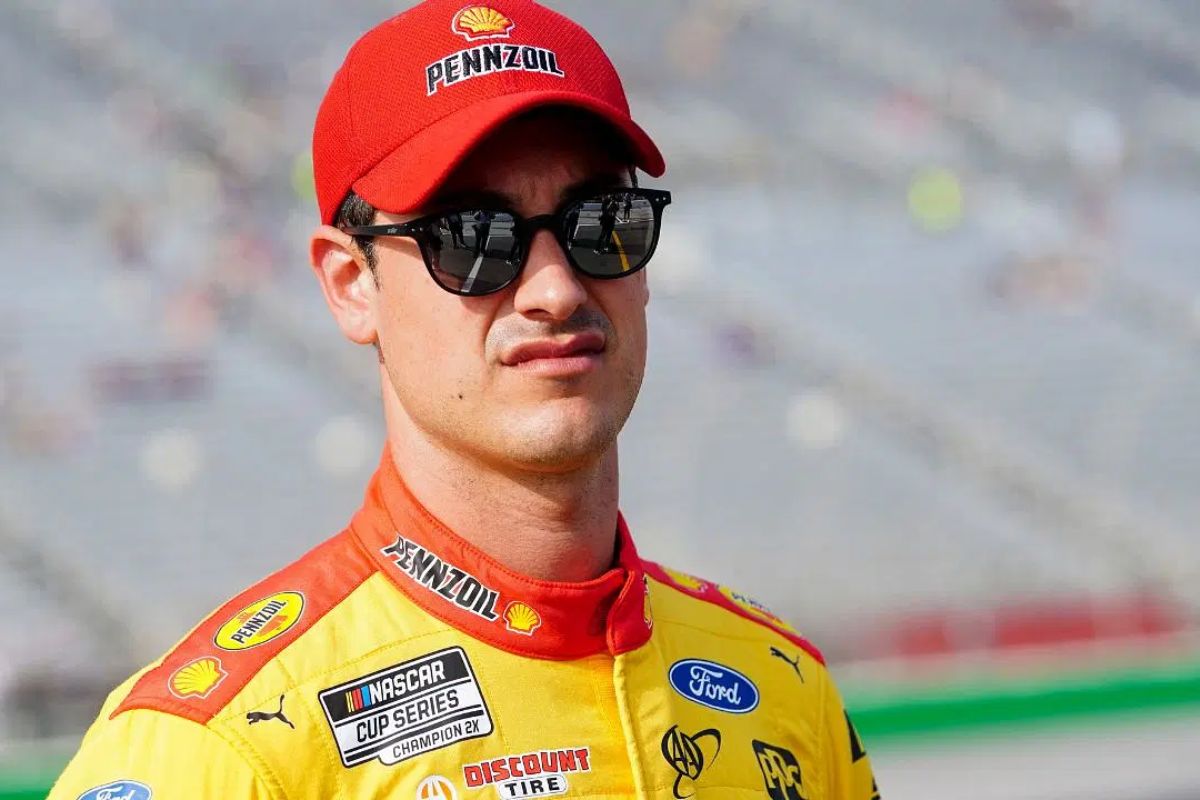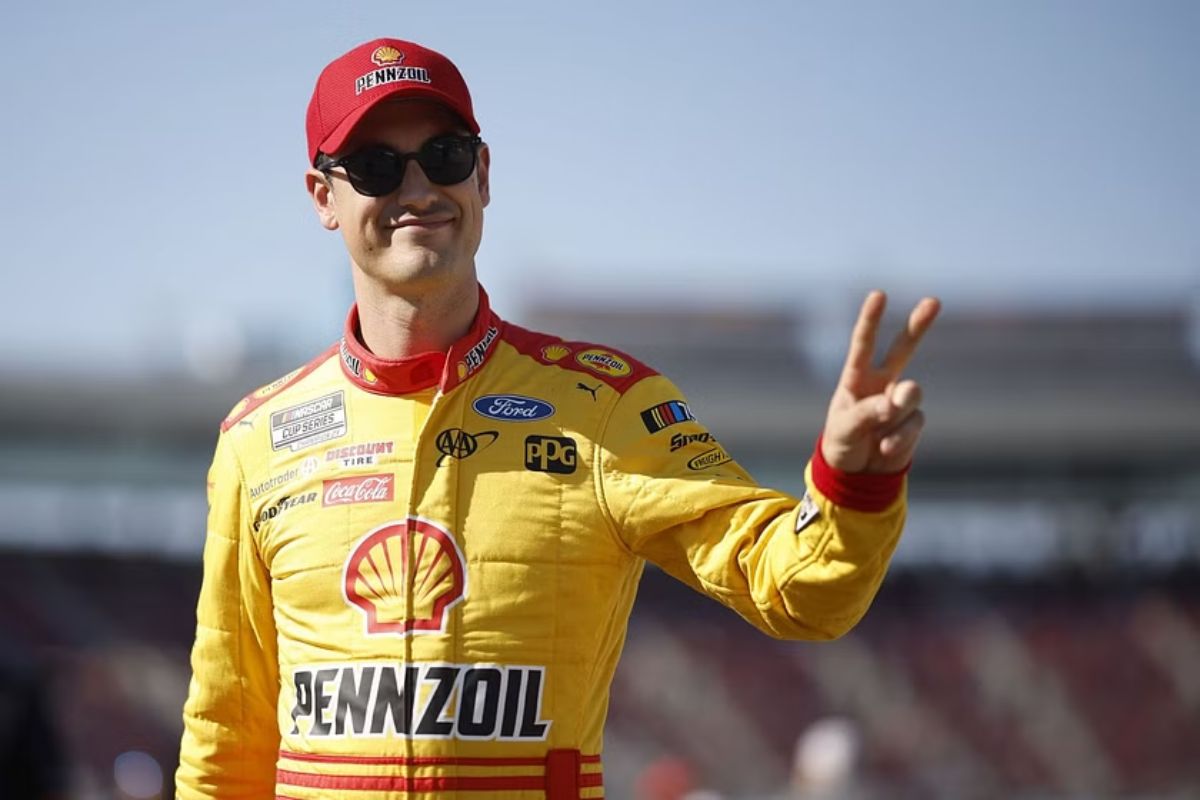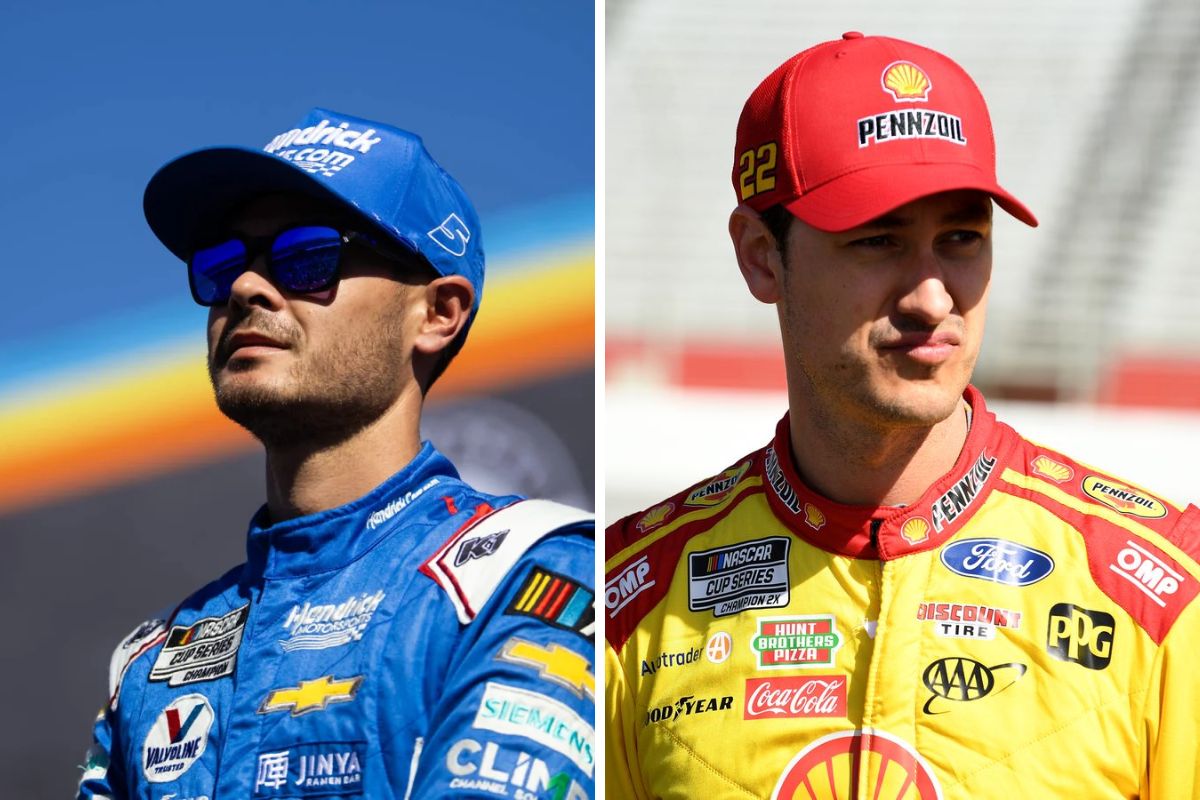Larson Leaves Logano Stunned: In the wake of Kyle Larson’s commanding victory at Texas, Joey Logano’s reaction—ranging from shock to a raise anxiety about returning to the broadcast booth—shows a significant narrative in NASCAR’s current competitive landscape. Larson’s display his dominance not only elevates his status but also a strategic introspections among his peers, including Logano, who has openly voiced concerns about maintaining relevance in a rapidly evolving sport.
Key Takeaways
- Larson’s unexpected performance has left Logano surprised during a recent race.
- Logano’s reaction may involve admiration or reconsideration of his own racing strategies.
- The phrase “Booth Return Feared” suggests Logano might be thinking about a return to broadcasting.
- Logano’s potential shift back to broadcasting could be driven by a desire for less intense competition.
- The situation highlights the ongoing rivalry and differing approaches between Logano and Larson on the track.
Logano’s Perspective on Driving Styles
Joey Logano’s aggressiveness driving style contrasts with Kyle Larson’s measured approach, setting the stage for their intense on-track encounters. This divergence in racing philosophies not only fuels their rivalry but also deeply influences the dynamics during competitions. Logano, often seen as the peak of racing aggression, pushes his vehicle to the limits, showing a win-at-all-costs mentality that thrills spectators. His approach involves making bold moves and taking risks that can lead to spectacular successes or dramatic setbacks.
On the other hand, Larson’s style is characterized by a calm and calculated ways, focusing on precision and consistency. His strategy often revolves around preserving his car for the critical final laps, rather than battling for every position from the start.

Logano’s Observations at Texas
At the Texas Motor Speedway, Logano highlighted distinctions in throttle management between Xfinity and Cup series drivers, sparking a deeper analysis of driving techniques across different racing levels. Observing the Xfinity races, Logano was struck by the contrast in how drivers approached throttle usage, noting that Xfinity competitors tended to spend more time off the gas, which differs from the more aggressive throttle applications observed in the Cup series.
“You know, every time we go to their in-car camera, it always blows my mind to hear how much they’re off the gas.”
“It’s just it’s so different. And every time I hear them out of the gas, I get jealous immediately. I’m like, Oh man, you hear how much you’re out of the gas?”-Logano
Logano’s observations invite a detailed understanding of racing dynamics, where throttle management plays a critical role in vehicle control and race strategy. In the Xfinity series, the long periods off the throttle could suggest a driving style that is more about momentum conservation and less about raw speed, compared to the Cup series where the emphasis might lean more towards maximizing speed and minimizing lap times.
“You know, even I was listening to Larson do his media availability up in Indy and he’s talking about the Indy car and he was saying how the next gen car actually drives kind of similar to an Indy car now. And I thought that was the craziest thing I ever heard.” -Logano
Logano’s Reflections on Next-Gen Cars
Reflecting on the advancements in racing technology, Logano expressed his surprise at how the next-gen Cup cars now mirror the design and performance characteristics of Indy cars. He highlighted the significant transformation from the traditional models, emphasizing how these changes have positioned the Cup cars closer to the high-performance benchmarks set by Indy cars. This evolution, according to Logano, not only enhances the competitive edge but also radically shifts the driving experience.
The next-gen cars have been a topic of keen interest and debate within the racing community. Logano’s insights reveal a profound appreciation for the technical upgrades that these vehicles boast. The shift to next-gen models represents a leap towards more sophisticated engineering and aerodynamics, aligning more with what was once exclusive to Indy car domains.

Logano’s Broadcasting Aspirations
Beyond his achievements on the track, Logano has also explored opportunities in sports broadcasting, recently serving as a guest analyst in the Xfinity broadcast booth. This move hints at a broader vision Logano holds for his career course post-racing.
“It definitely seems like something I’d want to do.”
“It’s the right thing to do for the sport, on top of it. It’s a pretty relaxed schedule, in comparison to driving a car. There’s significantly less pressure up in the TV booth. It’s enjoyable,” -Logano
Viewing it as a ‘less demanding’ alternative, he acknowledges the significant challenges and intense details associated with professional racing. Broadcasting offers a platform where his expertise and experiences can be leveraged in a manner that is both influential and less physically taxing. This strategic shift allows him to maintain a significant presence in the racing community while transitioning from the driver’s seat to the analyst’s desk.
Logano’s Envy of Xfinity Drivers
Despite Joey Logano’s considerable achievements in the Cup Series, Logano often reflects on the unique challenges and developmental opportunities present in the Xfinity Series. This is not about the success in the traditional sense but rather an acknowledgment of the rich, varied experiences that shape a driver in different ways compared to the often rigid structures of the Cup Series.
Joey Logano on the jealously he gets calling Xfinity Series races due to the off-throttle time of the platform.
Joey doesn't get the attention Actions Detrimental or Stacking Pennies, etc. gets but it's a fun listen every week. pic.twitter.com/mdcLgf4duL
— Matt Weaver (@MattWeaverRA) April 17, 2024
Xfinity Series races are known for their unpredictability and the diverse array of competitors, ranging from seasoned professionals to ambitious newcomers. This variety not only intensifies the competition but also enhances the learning curve, offering drivers a chance to refine their skills in distinctly challenging environments.
Moreover, the cars in the Xfinity Series differ significantly with regard to handling and performance characteristics compared to their Cup counterparts. These differences demand adaptability and finesse, traits that Logano admires and sometimes longs for in the technologically advanced but less variable Cup Series cars.

News in Brief: Larson Leaves Logano Stunned
The performance shown by Larson at Texas has greatly impacted Logano’s perception of his own racing capabilities and future career trajectory. The event highlighted the unpredictable dynamism inherent in NASCAR, challenging seasoned drivers to adapt continuously. Logano’s reflections reveal a growing concern about sustaining competitiveness against strong opponents and emphasize an underlying admiration for the skills displayed by Xfinity drivers.
Our Reader’s Queries
Q. Does Joey Logano still drive?
A. He competes full-time in the NASCAR Cup Series, driving the No. 22 Ford Mustang for Team Penske. Larson has also competed in the NASCAR Xfinity Series, the NASCAR Craftsman Truck Series, as well as what is now known as the ARCA Menards Series, ARCA Menards Series East, and ARCA Menards Series West.
ALSO READ: Kyle Larson’s Texas Wheel Chaos: Racing Nightmare Unfolds!


